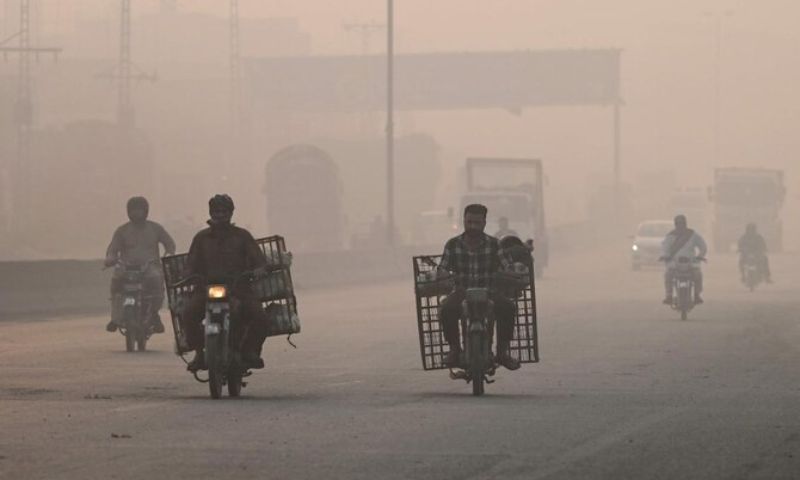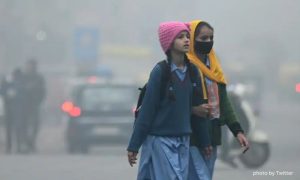LAHORE, Pakistan: Residents of Lahore are grappling with dangerously high air pollution levels as the Air Quality Index (AQI) soared past 1000, marking the city as the most polluted in the world once again.
The Swiss air quality monitor IQAir reported that fine particulate matter (PM2.5), which poses significant health risks, peaked at an alarming 613 µg/m³—122.6 times above the World Health Organization’s unhealthy threshold.
On Sunday, the AQI spiked to an unprecedented 1073 by 10 a.m. and even reached 1194 at one point before slightly improving to 766. The thick smog enveloping the city has rendered visibility near-zero, exacerbating public health concerns as the Punjab government struggles to mitigate pollution levels.
The persistent smog, a mix of fog and pollutants, has affected the city’s 14 million residents, particularly those working outdoors. Reports of respiratory issues, coughing, and eye irritation are rampant, underscoring the health crisis the city faces. Factors contributing to this pollution include low-quality diesel emissions, agricultural burning from nearby farms, and climatic conditions that trap pollutants close to the ground.
In response to the worsening air quality, the Punjab government has implemented a “Green Lockdown” in severely polluted areas, banning construction activities, restricting certain transportation, and mandating mask-wearing. However, these measures have so far failed to make a significant impact on air quality, which continues to deteriorate across the province.
Environmental experts stress the importance of adhering to safety guidelines to protect against the harmful effects of smog. The situation is further complicated by smoke from neighboring India, which also faces similar pollution challenges, contributing to Lahore’s air quality crisis.
The Pakistan Meteorological Department has warned that nearby cities will experience similar smog conditions, leading to heightened health risks in the region. As diplomatic discussions with India regarding air quality collaboration gain traction, the need for a coordinated regional response to air pollution becomes increasingly urgent.























